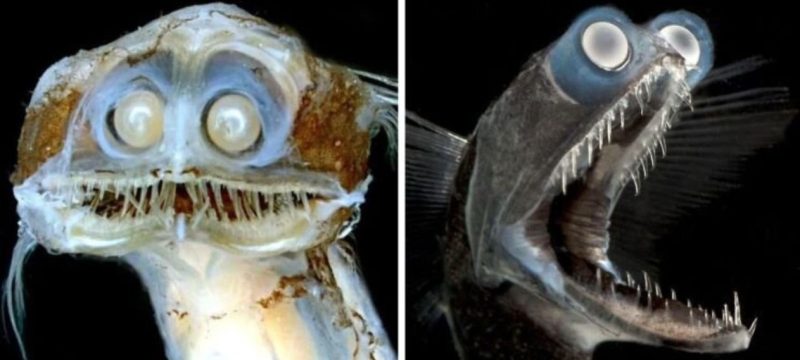Mar del Plata, Argentina – A recent deep-sea expedition has captured global attention after footage of a rare marine creature, known as the telescope fish, went viral on social media. The discovery coincided with “Underwater Oases of Mar del Plata Canyon,” an expedition led by Argentina’s National Scientific and Technical Research Council.
The telescope fish stunned viewers with its translucent body, large forward-facing eyes, and unusually wide jaw. Its alien-like appearance sparked curiosity and amazement online, with many comparing it to creatures from science fiction films.
A Rare Glimpse into the Deep
The telescope fish belongs to the Giganturidae family, commonly referred to as “swallowers.” These elusive fish live at depths of 500 to 3,000 meters, making sightings extremely rare. While the viral clip was not officially from the expedition’s live stream, it spread widely during the event’s peak popularity, boosting public interest in deep-sea life.
The species’ eerie look prompted a flood of online reactions, from lighthearted memes to in-depth discussions about deep-sea biodiversity. The video also renewed public interest in the question: Do telescope fish exist? For many, this was the first time seeing such a creature.
Argentine Expedition Breakthrough
The Mar del Plata Canyon expedition represents a milestone for Argentine marine research. Scientists used a remotely operated vehicle (ROV) to explore the ocean floor without disturbing the fragile ecosystem. This technology provided high-definition visuals and allowed for precise collection of biological samples.
Located off the Buenos Aires coast, the canyon is a biodiversity hotspot. Cold and temperate waters converge here, creating conditions that support unique and often undiscovered marine species.
Understanding the Telescope Fish
The telescope fish deep-sea species has evolved remarkable adaptations to survive in one of the most hostile environments on Earth. Its expandable jaw allows it to swallow prey larger than its own body, an important trait in the food-scarce depths. Its elongated shape and filament-like tail help it navigate dark waters, while its prominent eyes may improve vision in low light.
Despite its fearsome appearance, the telescope fish is small, measuring only 15 to 21 centimeters, and is harmless to humans. This answers another popular question circulating online: Are telescope fish dangerous? The answer is no.
Science, Social Media, and Public Awareness
The viral attention on the telescope fish demonstrates how technology can bridge the gap between scientific research and public engagement. While the expedition continues to uncover other fascinating species, this ghostly fish has already become a symbol of the mysteries still hidden beneath the waves.
Experts hope that the excitement generated by the discovery will inspire greater support for ocean research and conservation. As scientists explore deeper into the Mar del Plata Canyon, more remarkable footage is expected to emerge, both from the depths of the ocean and across social media feeds worldwide.
Stay informed on this pivotal energy reform by reading more from our coverage: Govt Considers Expanding Protected Electricity Slab.









